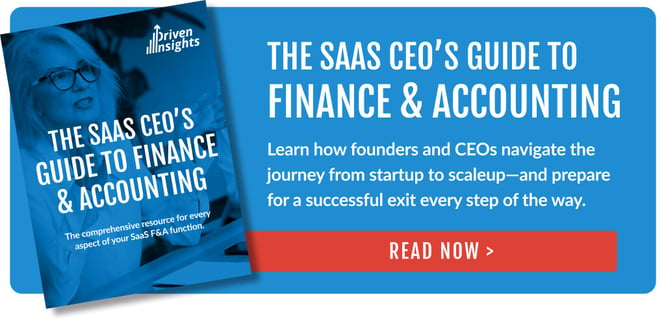
One of the most critical decisions a SaaS founder or CEO must make is when to invest in scaling the business. When the timing is right, a strategic investment in sales and marketing will fuel exponential revenue growth. But, when the timing is off, a SaaS company can quickly burn through cash and find itself out of runway.
One financial metric that aims to make this decision easier is the SaaS magic number.
SaaS magic number is one of several “sales efficiency metrics” whose purpose is to measure the impact of each dollar spent on sales and marketing on revenue growth. The more efficiently sales and marketing spend translates into revenue growth, the stronger the case for increasing that spend. This can mean expanding the sales team, intensifying marketing efforts, or seeking the necessary capital to do so.
How is the SaaS magic number calculated? How should you interpret the results? When does it matter most? Do investors care about it?
In this article, we’ll answer these questions and more, so you understand when and how the SaaS magic number best fits into your growth strategy.
What is the SaaS Magic Number?
The SaaS Magic Number is a measure of sales efficiency commonly used for subscription businesses with recurring revenue. The SaaS magic number provides two primary insights:
- How much new revenue is created for every dollar spent on sales and marketing.
- When to invest more (or less) in sales and marketing.
For example, if your SaaS magic number is one or greater, it means that you are recouping customer acquisition costs (CAC) at an acceptable rate—a good indication that you’re ready to scale your sales engine. A lower SaaS magic number tells you that your processes are less efficient, so it’s worth refining before attempting to fuel rapid growth.
Because it’s one of few SaaS metrics that are easily benchmarked, investors will pay particularly close attention to the SaaS magic number, using it to compare your sales efficiency to industry standards. As such, it’s important for SaaS firms to focus on the magic number leading up to an investor conversation, so sales efficiency and associated trends can be confidently addressed.
How to Calculate the SaaS Magic Number
The SaaS magic number takes revenue growth (GAAP or ARR) between two consecutive quarters, annualizes it, and divides by the first quarter’s sales and marketing spend.

Depending on the maturity of your SaaS business, it can be helpful to compare the SaaS magic number calculated from Annual Recurring Revenue (ARR) vs. GAAP revenue. For more information, see our guide to ARR. It’s also a good idea to circulate a “metrics glossary” with your monthly reporting to define and document how each KPI is to be measured consistently throughout your organization.
How to Interpret the SaaS Magic Number
If your SaaS magic number is below 0.5
You’re not ready to invest in scaling your sales process. You may need to refocus on product/market fit, refine your business model, re-examine your pricing strategy, and/or correct inefficiencies in your sales and marketing efforts.
If your SaaS magic number is between 0.5 and 0.75
It’s time to evaluate whether or not you’re ready for rapid growth. Take a careful look at cash flow, runway and gross margins to see if a significant sales and marketing investment makes sense.
If your SaaS magic number is above 0.75
You’re ready to invest in sales and marketing. A SaaS magic number in this range demonstrates a healthy CAC payback and signals efficiency and momentum. The closer you can get your SaaS magic number to 1, the better.
Why the SaaS Magic Number is Important and When to Use It
Your SaaS magic number is important because it helps you, your stakeholders, and potential investors understand how today’s spending will influence future performance. A high SaaS magic number generally means your business is efficient at turning sales and marketing dollars into revenue. Investors will see a direct correlation between putting money into sales and marketing and seeing a return on that investment through increased customer acquisition and revenue growth.
You can use the SaaS magic number to align your board and leadership team around sales efficiency goals. When strategic decisions—like when and how much to increase your sales and marketing spend—are driven by data, it’s that much easier to get everyone on the same page. The magic number will also help your team to focus on a key metric that matters to investors.
The SaaS magic number is a valuable tool for benchmarking, as well. When based on GAAP revenue, your magic number can be accurately compared to industry standards and even publicly traded companies.
The Limitations of the SaaS Magic Number
The SaaS magic number is a valuable metric for many reasons. Its simple formula isn’t open to multiple interpretations, it allows for consistent benchmarking, and it serves as a yardstick for sales efficiency for both SaaS firms and investors. However, like most metrics, SaaS magic number has its limitations.
For starters, it is important to remember that SaaS magic number only accounts for top line revenue growth. Cost of goods sold (COGS) and other gross expenses are not included, so the SaaS magic number is not a complete measure of break-even or profitability.
While revenue growth is a key signal of product/market fit and the need to invest more in sales and marketing, a SaaS company must also generate a return on that investment. Therefore, any discussion of profitability must include the impact of churn, contraction revenue, and expansion revenue—factors that SaaS magic number does not account for. A plan to increase sales and marketing spend, for example, will be uninformed without a strategy to replace customers churning out of the business.
Because the SaaS magic number doesn’t distinguish between expansion, contraction, new, or renewal revenue, you’ll need other SaaS metrics to build a complete picture of company health.
Finally, the SaaS magic number can be an unreliable indicator of sales efficiency for early stage SaaS companies. In the early going, founders are often heavily involved in sales, which can skew sales and marketing costs, resulting in an overstated or understated magic number. Once a firm has reached product/market fit and begins building a scalable sales process, the SaaS magic number will provide a more accurate gauge.
SaaS Magic Number is Just One Part of Your Growth Strategy
The SaaS magic number is a valuable tool for measuring sales efficiency, aligning stakeholders, and supporting fundraising efforts, but it comes with blind spots and limitations. To gain a complete understanding of your company’s financial health, you’ll need to rely on other metrics, as well.
Knowing which metrics to use, when to use them, and how to use them, can be challenging. Getting this right is essential, however, and highlights the need for experienced finance leadership. With an outsourced CFO service for SaaS companies, even early stage firms can secure the high-level leadership they need, along with a fully-integrated finance and accounting team.
Learn more by scheduling your introduction to Driven Insights today. You’ll receive a free proposal and discover a cost-effective way to have all the finance resources your business deserves, today and as you grow.








